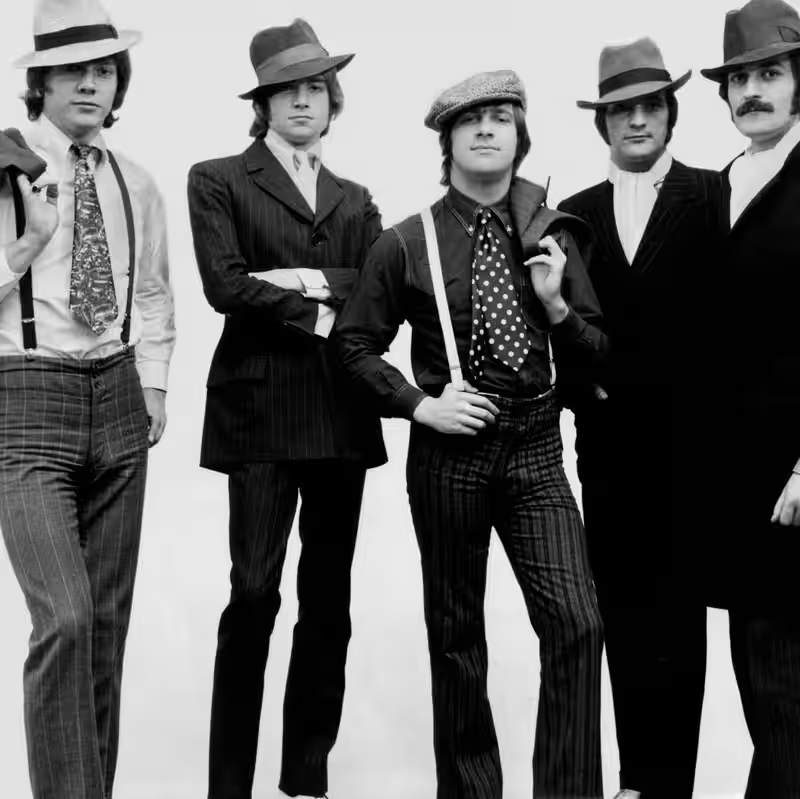Table of Contents
- A Voice and Vision That Defined an Era
- How The Moody Blues Changed Rock Forever
- John Lodge’s Signature Songs That Became Anthems
- From Birmingham Teen to Rock Royalty
- Final Years and Lasting Influence
- Sources
John Lodge: A Voice and Vision That Defined an Era
John Lodge, the bassist, vocalist, and songwriter behind some of The Moody Blues’ most iconic tracks, has died at age 82. His family confirmed his sudden and unexpected passing on Friday, October 10, 2025, though no cause or location was disclosed.
Lodge wasn’t just a supporting player in one of rock’s most innovative bands—he was a creative force who helped shape the sound of progressive rock during its golden age. With his supple bass lines, soaring falsetto harmonies, and sharp songwriting instincts, Lodge co-piloted The Moody Blues from their R&B beginnings into orchestral, concept-driven territory that would influence generations.
How The Moody Blues Changed Rock Forever
Formed in Birmingham, England, in 1964, The Moody Blues first found fame with the soulful hit “Go Now.” But it wasn’t until John Lodge and Justin Hayward joined in 1966—replacing departing members Denny Laine and Clint Warwick—that the band’s true identity began to emerge.
Their 1967 album Days of Future Passed wasn’t just a turning point—it was a revolution. Blending rock with the London Festival Orchestra and pioneering the use of the Mellotron (thanks to keyboardist Mike Pinder), the album is widely regarded as one of the first true concept albums in rock history.
“We wanted to play each part exactly right and new, and like no one else had ever played that particular part to a song before,” Lodge once told The Strange Brew. That spirit of invention defined the band’s creative peak.
John Lodge’s Signature Songs That Became Anthems
While all five members contributed to The Moody Blues’ songbook, Lodge penned some of their most enduring hits:
| Song | Year | Chart Peak (US) | Notable Trait |
|---|---|---|---|
| “Ride My See-Saw” | 1968 | Top 40 | Driving bassline, psychedelic energy |
| “I’m Just a Singer (in a Rock and Roll Band)” | 1973 | #12 | Witty, self-aware anthem |
| “Isn’t Life Strange” | 1972 | Album cut | Orchestral, melancholic beauty |
| “Gemini Dream” (with Justin Hayward) | 1981 | #12 | New wave-infused revival hit |
These tracks didn’t just chart—they captured the philosophical, searching spirit of their time, blending mysticism, existentialism, and melody in a way few bands dared.
From Birmingham Teen to Rock Royalty
Born on July 20, 1943, in Birmingham, Lodge fell in love with rock ’n’ roll as a teenager, inspired by Buddy Holly’s songwriting. At 16, he bought his first Fender Precision bass—a sunburst model he’d later bring to global stages.
He was studying at Aston College of Technology when the call came to join The Moody Blues. “I said, ‘Have bass, will travel,’” he recalled in a 2015 interview with The Telegraph. That decision led to a writing retreat in a Belgian village where much of Days of Future Passed was conceived.
Final Years and Lasting Influence
Though The Moody Blues went on hiatus in 1974, they reunited in 1977 and continued touring and recording through the 2010s. Lodge released solo albums, including Natural Avenue (1977), and kept performing even after the band retired from touring in 2019—often alongside his son-in-law, Jon Davison of Yes.
In 2018, the band received its long-overdue induction into the Rock & Roll Hall of Fame. Lodge’s final project, Days of Future Passed — My Sojourn, offered a personal reimagining of the landmark album that launched his career.
He is survived by his wife Kirsten, son Kristian, daughter Emily, and a grandson. With his passing—and that of Mike Pinder in 2024—the original Moody Blues era has fully closed. But their music, and Lodge’s contributions, remain timeless.


